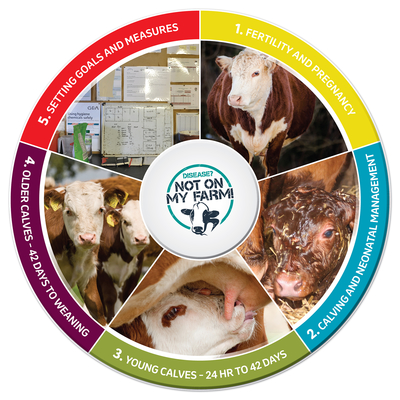MSD Animal Health has developed a new vet-driven on-farm audit tool to help UK beef suckler producers address the key areas influencing optimum herd health and performance.
The company’s new Suckler Herd Performance Checklist helps a farm’s vet assess performance across the five crucial time periods and processes impacting on the success of beef suckler herd.
“Suckler producers can use this tool to work together with their vet to help them benchmark their herd performance,” explained Dr Kat Baxter-Smith, livestock veterinary adviser with MSD Animal Health.
“For example, reducing calf morbidity and mortality rates in a suckler herd starts with management practices before conception. Optimum performance also requires following proper management protocols throughout the youngstock period from birth to weaning, including effective colostrum administration, vaccination, nutrition and hygiene.”
Drawing on results from MSD Animal Health’s recent National Youngstock Survey1, Dr Baxter-Smith said that, on average, beef suckler producers rate their management practices at 7 out of 10 in these crucial areas. However, in the surveyed farms, 83% left colostrum to natural suckling only and 79% never checked colostrum quality.
“The survey results also highlighted a need for farmers to engage more with their vets during disease outbreaks. While 72% experienced scour and 34% experienced mortality due to scour, only 41% had the cause of scour diagnosed. The findings are similar for pneumonia cases: 57% experienced pneumonia, which caused 34% to experience mortality. However, fewer than 30% of those surveyed had the cause of pneumonia diagnosed,” she said.
The new checklist explores, records and scores suckler herd performance to allow the vet to identify the strengths and weaknesses of an individual unit’s environment and processes. “Working through a series of 10 questions within each of the five areas – designed to tease out where a rearing unit is in terms of accepted best management practice – allows vet and farmer to quickly pinpoint any areas needing attention. What’s more, repeating the checklist every six or 12 months is a great way to keep things on track, allowing both parties to monitor progress against agreed targets,” said Dr Baxter-Smith.
She added that a similar style of checklist has been available to youngstock rearing units in the dairy industry for more than a year now, with many farmers saying how useful they have found the time spent engaging with their vet.
“Use of the checklist approach is also helping reduce the need for antibiotic use through the implementation of preventative health practices such as vaccination,” she said.
Farmers interested in finding out more about the on-farm audit tool should contact their vet for further information.


